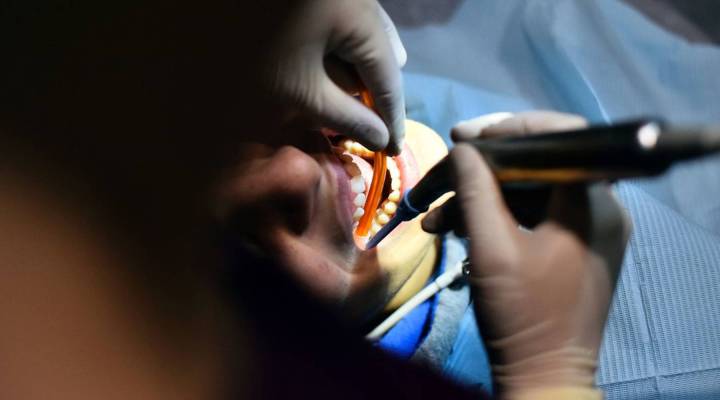
Why Native Americans want a new form of dental care

It’s a sobering statistic: Native American preschoolers have four times more cavities than white children.
Since many dentists don’t take Medicaid, because of low rates of reimbursement, it can be incredibly difficult to get care.
One solution: hiring a new type of dental practitioner, a dental therapist, who can do simple procedures, like cleanings, fillings and extractions.
Momentum is building among Native American tribes to train and hire these practitioners.
The push makes sense to Colorado-based dentist Terry Batliner, also associate director for Center for Native Oral Health Research at the University of Colorado.
Batliner said he knows what poor dental health and lack of access does to Native American kids.
“What this really looks like is a 3-year old with all of their teeth decayed down to the gum line,” he said.
“You just see roots sitting in the gums.”
Among Native American adults, 68 percent have untreated tooth decay compared to 26 percent of all U.S. adults.
In Alaska, tribes think they’ve got a fix.
For the past decade, they have hired and trained more than 30 dental therapists.
“We’re going to try to get every single tribe in the nation that has dental programs to employ this strategy,” said Brian Cladoosby, president of the National Congress of American Indians.
Intertribal organizations representing some 105 tribes and pueblos have passed resolutions supporting dental therapy.
As interest builds, dentists are digging in their heels.
The American Dental Association and its local dental societies have fought legislation in 12 states.
“We’re fighting for what’s best for the public,” said Dr. Jonathan Shenkin, a spokesman for the ADA and a practicing pediatric dentist in Maine.
Shenkin said therapists aren’t getting to the source of the problem.
“It’s not reducing the overall burden of disease in these populations. The question is what more can be done,” he said.
Shenkin said sugary food consumption as well as poor oral health habits are to blame.
A new dental therapy pilot project just underway in Oregon should help build evidence on whether this novel approach can help.
There’s a lot happening in the world. Through it all, Marketplace is here for you.
You rely on Marketplace to break down the world’s events and tell you how it affects you in a fact-based, approachable way. We rely on your financial support to keep making that possible.
Your donation today powers the independent journalism that you rely on. For just $5/month, you can help sustain Marketplace so we can keep reporting on the things that matter to you.












